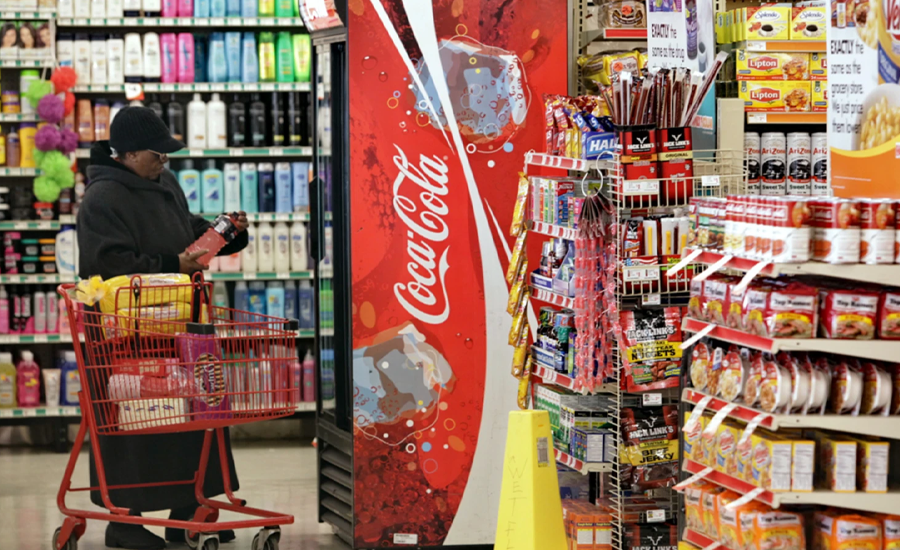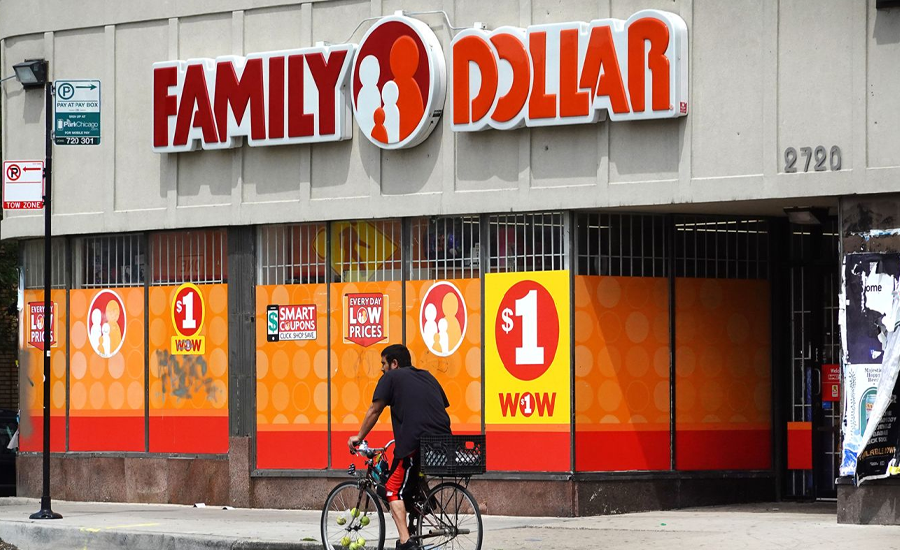Family Dollar has locations spread across the United States. It has thousands of stores in urban, suburban, and rural areas. The chain caters to a diverse customer base. This includes families, individuals, and households seeking value shopping.
Family Dollar Stores is a famous and recognizable store in the United States. Some key information about Family Dollar is.
1. Leon Levine founded Family Dollar in 1959 in Charlotte, a country in North Carolina. Levine’s vision was to offer their customers many types of things at low and affordable prices. The stores would be in convenient neighborhoods. The company’s expansion has been consistent through the years. We’ve done so through a mix of organic growth and smart purchases.
2. In 2015, Dollar Tree, Inc. acquired Family Dollar. This created one of the largest discount retail chains in the United States. Dollar Tree kept the Family Dollar brand as a subsidiary. But it’s made many changes to streamline operations and boost profits.
3. Family Dollar stores occupy 7,000 to 10,000 square feet (ca. 9 a). Customers know the stores for their low prices, it’s grade, and handy locations. They often serve as go-to destinations for budget-conscious shoppers.
4. Family Dollar stores stock products from famous national brands. They also carry their brands. They have offerings in many categories. These include food and snacks. They include cleaning and health products, pet supplies, and home décor. The company emphasizes value and affordability. It aims to provide customers with everyday essentials at low prices.
5. Family Dollar commits to serving the communities where it operates. The company backs local charities and outreach programs. It partners with organizations, schools, and nonprofits.
Consumer Behavior and Market Trends

Shifting to value shopping has helped discount stores. But Family Dollar has struggled to stand out. But Dollar General, for example, has been more successful. to rural and suburban areas. Family Dollar focuses on cities. It’s facing more competition from local grocers and convenience stores. Family Dollar manages a chain of physical stores, comprising storefront outlets. The company has also expanded its online presence in recent years. Customers can browse and buy selected items on the Family Dollar website. This adds convenience and access for shoppers. Family Dollar is important in retail. It provides customers with cheap goods and easy shopping. The company has adapted to the changing needs of consumers.
Understanding the Shift
Family Dollar was once common in US communities. However, in recent years, it has faced many closures. This trend has many reasons. It reflects shifts in how consumers and companies act, and in the economy. Let’s delve into the factors contributing to the closure of Family Dollar stores.
1. Family Dollar closed stores. Its market strategy overlapped with its parent company, Dollar Tree. This is a significant factor. Dollar Tree acquired Family Dollar in 2015. It aims to diversify its customer base and increase its rate. Yet, this led to an overlap in product and store locations. This diluted the distinctiveness of each brand and caused sales cannibalization.
2. Competition has intensified. Discount retailers now face fierce rivals. These include online giants like Amazon and other brick-and-mortar chains. Family Dollar’s old model offered cheap goods. But it struggled to stay profitable. This was due to intense competition and changing consumer preferences.
3. Economic pressures have raised operating costs. These costs include labor and real estate expenses. They’ve squeezed margins for many retailers. Stagnant wages and economic uncertainty have affected how consumers spend. This has led some to seek bigger bargains or rank convenience over price.
4. Consumer preferences have also changed. This shift has hurt Family Dollar. Today’s consumers, particularly younger demographics, rank convenience, value, and experience. Traditional dollar stores may struggle to meet these needs. This is leading some shoppers to seek other retailers. They are also looking for online options.
5. COVID-19 Pandemic: The COVID-19 pandemic further exacerbated challenges for retailers, or online marketing, including Family Dollars. Store closures, supply chain disruptions, and changing consumer habits strained the environment. For instance, people shopped more online, and fewer visited physical stores.
6. Store Performance and Optimization: Family Dollar has been evaluating its stores’ performance. It has been optimizing its portfolio to focus on more profitable locations. This strategy shuts down underachieving stores. It also means combining operations. It also means moving resources to make the brand more efficient and competitive.
7. The retail landscape is changing fast. It’s driven by technology, changing demographics, and shifting consumer expectations. Retailers must adapt to these changes to stay relevant and sustainable. They must do this by embracing innovation. They must also improve their omnichannel abilities. They must deliver its added value to customers.
In conclusion, the closure of Family Dollar stores reflects a mix of market forces. It also reflects corporate strategies and broader economic trends. As challenges persist, opportunities for reinvention and adaptation abound.
Internal Challenges and Strategic Missteps

There were issues with the merger integration. Experts expect it to lower costs and create synergies. But, merging two big companies is hard. They’ve got different cultures and ways of working. These integration issues have led to inefficiencies and distractions from core business operations.
The merger’s main challenge was that Family Dollar and Dollar Tree had many stores in the same places. In many markets, the proximity of stores cannibalized each other’s sales. As a result, it became necessary to close locations. They were either underperforming or redundant. They do this to streamline operations and improve profitability. Supply Chain and Inventory Management are critical. They are key to the success of any retail operation. Family Dollar is facing issues in this area. This has led to inconsistent product availability and stock outs. Bad inventory management can drive customers away. It’s especially true if they rely on the store for the necessary items.
Role of Family Dollar Stores in the COVID-19 Pandemic
Family Dollar stores face big challenges and a lot of hurdles in their time. They’ve taken various steps to navigate the COVID-19 pandemic. Here are some critical of the condition. Family Dollar stores likely experienced them during this time: adaptations.
Family Dollar stores likely added health and safety protocols. They should protect customers and employees from COVID-19. This may have included requirements for face coverings. It also may have needed frequent cleaning of high-touch surfaces. And people may have had to keep apart in stores. The company likely prioritized employee health and safety. They’ve done this by providing personal protective equipment (PPE) and doing temperature checks. also offered paid sick leave. This encouraged employees to stay home if they felt unwell or were exposed to COVID-19. Family Dollar may have faced supply chain challenges. Like many retailers, they’ve had disruptions. This was due to factory closures. Also, due to transportation delays and high demand for certain products. This could have led to temporary shortages or delays in replenishing inventory.
The pandemic changed how people shopped. Many opted for online shopping or contactless payments to avoid the virus. Family Dollars may have changed by adding online offerings. They also added curbside pickups where workable. it had Essential Retailer Status. They sell essential things like groceries, household supplies, and health care items. They’ve likely stayed open during lockdowns(COVID-19) and stay-at-home orders by online and local authorities. The company played a critical role. This ensured access to vital products for US communities. These stores may have supported the community. They did this with initiatives to help those affected by the pandemic. This could have included donations of key supplies. It could have also involved partnering with local organizations to help vulnerable people. They could have supported frontline workers in healthcare and other key industries.
Family Dollar may have changed its store hours. It may have also limited the number of customers inside. They’ve done this to adapt to health rules, promote social distancing, and cut crowding. They likely faced many challenges and changes during the COVID-19 pandemic. They’re focused on keeping customers and workers safe. They’ve also continued to provide essential goods and services to US communities.
Financial Performance and Cost Management
Rising Operational Costs: Operational costs, including wages, rent, and utilities, have been rising. Family Dollar operates many of its stores in cities. Costs there can be very high. Margins are already thin in discount retail. So, any increase in costs can hurt profits. Dollar Tree’s acquisition has added significant debt to the combined company. The company spends a lot of its earnings on debt payments. This limits its ability to invest in store improvements, technology, and growth initiatives.
Strategic Responses and Future Outlook
They’ve renovated existing stores to improve the shopping experience and close underperforming locations. Store renovations focus on better layouts, expanded product assortments, and improved customer service. Family Dollar is also refocusing on core markets. a strong presence and competitive edge there. The company aims to build a more sustainable and profitable business. They’ll do this by focusing on these areas. Leveraging Dollar Tree integration. Efforts continue to better use the synergies with Dollar Tree. This includes cross-brand promotions. It also includes shared supply chain resources. It’s a unified approach to managing inventory.
Family Dollar is investing in its digital abilities. We’re doing this to stay relevant. This includes bettering its e-commerce platform. It also includes improving its mobile app. It also includes growing its digital marketing. The goal is to provide a more integrated shopping experience.
Conclusion
Family Dollar stores are closing for many reasons. These include changing consumer preferences, more competition, economic pressures, and internal challenges. The retail landscape continues to change. Family Dollar is adapting by closing stores, renovating, and investing in digital. This shows their commitment to staying relevant in a tough market. These initiatives will determine the brand’s future path.

As a versatile and creative content writer, I craft compelling narratives that captivate and engage readers. With a keen eye for detail and a passion for storytelling, I transform ideas into impactful content. Clients choose me for my ability to understand their vision, deliver high-quality work on time, and provide a unique voice that resonates with their audience.

